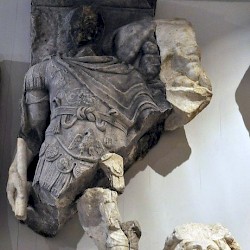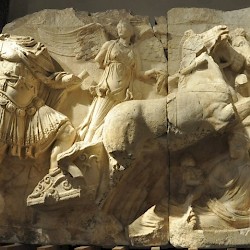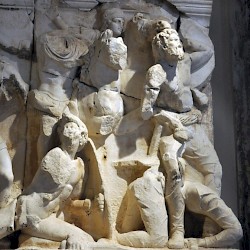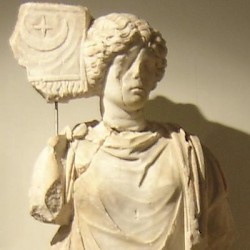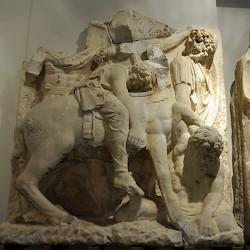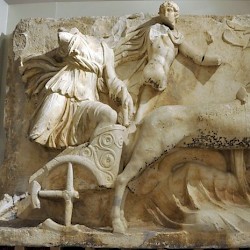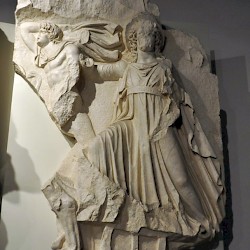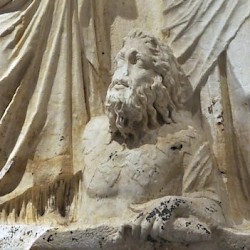Ephesus, Parthian Monument
Ephesus (modern Selçuk): ancient Greek town in western Turkey, one of the largest and best excavated cities of the ancient world.
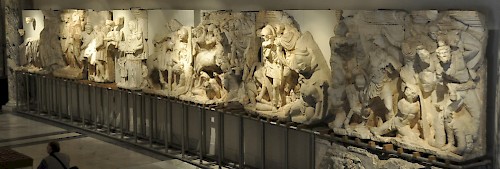
The Library of Celsus was destroyed by an earthquake in 262, and the facade became part of a fountain that was built from re-used reliefs that once had been a monument dedicated to the Roman victory over the Parthian Empire, achieved by the emperor Lucius Verus in 162-165. The originals are now in the Ephesos Museum in Vienna.
There are various reliefs. The first picture below presents the emperor in battle dress, posing like the war god Mars. Behind him, you can see the she-wolf of Rome, with Romulus and Remus. The head to the right of the ruler (click on the picture) may be a river god, e.g. the Euphrates (which was important during Lucius Verus' campaign) or the Tiber (which is connected to Romulus and Remus).
The second photo below presents the emperor moving to the battlefield, shown in a chariot. Romans did not use war chariots, but this is a Homeric representation: the emperor was equal to the heroes of the Trojan War. The half-naked lady to the right (click on the photo) is the goddess Roma, the winged figure is Victoria. The combination of emperor + chariot + Roma + Victory is also known from the Arch of Titus in Rome. It indicates an apotheosis and helps us date the monument after Lucius Verus' death in 169 CE.
Next, a battle scene. Right of the center, a Roman general gives an order. To the left, a Roman soldier kills a Parthian. The commander is probably not the emperor, who was in the chariot; he may be Avidius Cassius, who sacked the Parthian capital Ctesiphon in 165, later fell into disgrace, and may have lost his head (on this relief) when an angry Ephesian attacked the monument. To the far left, a river god.
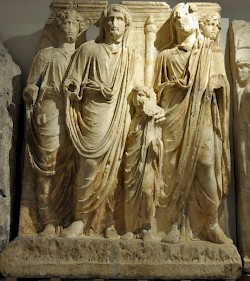
The photo the right may have been the central scene: an adoption. The emperor Hadrian (r.117-138) had had no son to succeed him and had adopted Antoninus Pius (r.138-161), who had no sons either, and was ordered to adopt Marcus Aurelius and Lucius Verus. This is represented on this relief. From left to right: Marcus, Hadrian, Lucius, Pius, and a sacrifice.
The monument also contained representations of the cities of Mesopotamia that had been conquered. The fourth photo below represents Harran, which was famous for its temple of Sin, the moon god, who is represented on the banner. No Roman can have seen this without feeling some delight, because Harran was the scene of the infamous defeat of the Roman commander Crassus, the triumvir. After the victories of Lucius Verus, the death of Crassus had finally been avenged.
The second line of photos below shows some other bits of pieces.
